Publications
publications by categories in reversed chronological order. generated by jekyll-scholar.
2023
-
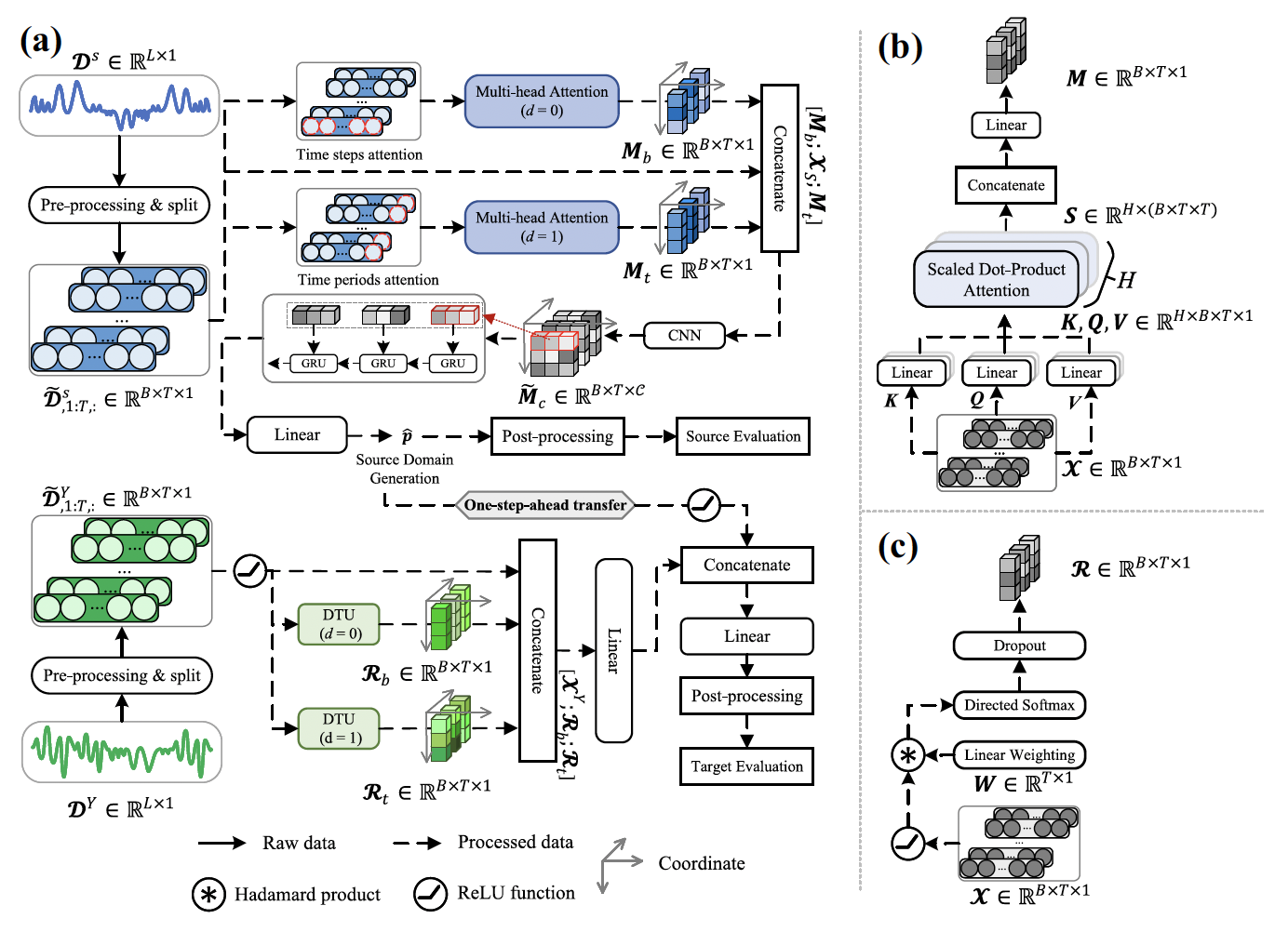 HFMD Cases Prediction Using Transfer One-Step-Ahead LearningNeural Process. Lett., 2023
HFMD Cases Prediction Using Transfer One-Step-Ahead LearningNeural Process. Lett., 2023Hand, foot andmouth disease (HFMD) is a susceptible viral infectious disease to infants and children, which led to millions of cases and hundreds of deaths annually in China. Existing predictive methods commonly learn the development patterns from historical observations. However, almost all these methods are neglect the immediate impact of exogenous factors on HFMD transmission. To solve the limitation, we consider the approximately unidirectional influences from temperature to confirmed cases and then propose a transfer one-step-ahead learning (Tr-OSH) method to establish their association. The Tr-OSH method first extract the unidirectional representation from temperature observations, and subsequently transfer the obtained representation for HFMD cases prediction. Moreover, we notice the independent correlation of each time step and period, and generate the independent representation by the relevance to upcoming values. Intensive experiments on real-world HFMD datasets demonstrate that our Tr-OSH method much efficaciously improves prediction accuracy.
@article{journal/npl2023/55Huang, author = {Huang, Yaohui and Zhang, Peisong and Wang, Ziyang and Lu, Zhenkun and Wang, Zhijin}, title = {{HFMD} Cases Prediction Using Transfer One-Step-Ahead Learning}, journal = {Neural Process. Lett.}, volume = {55}, number = {3}, pages = {2321--2339}, year = {2023}, url = {https://doi.org/10.1007/s11063-022-10795-9}, doi = {10.1007/s11063-022-10795-9}, dimensions = {true}, } -
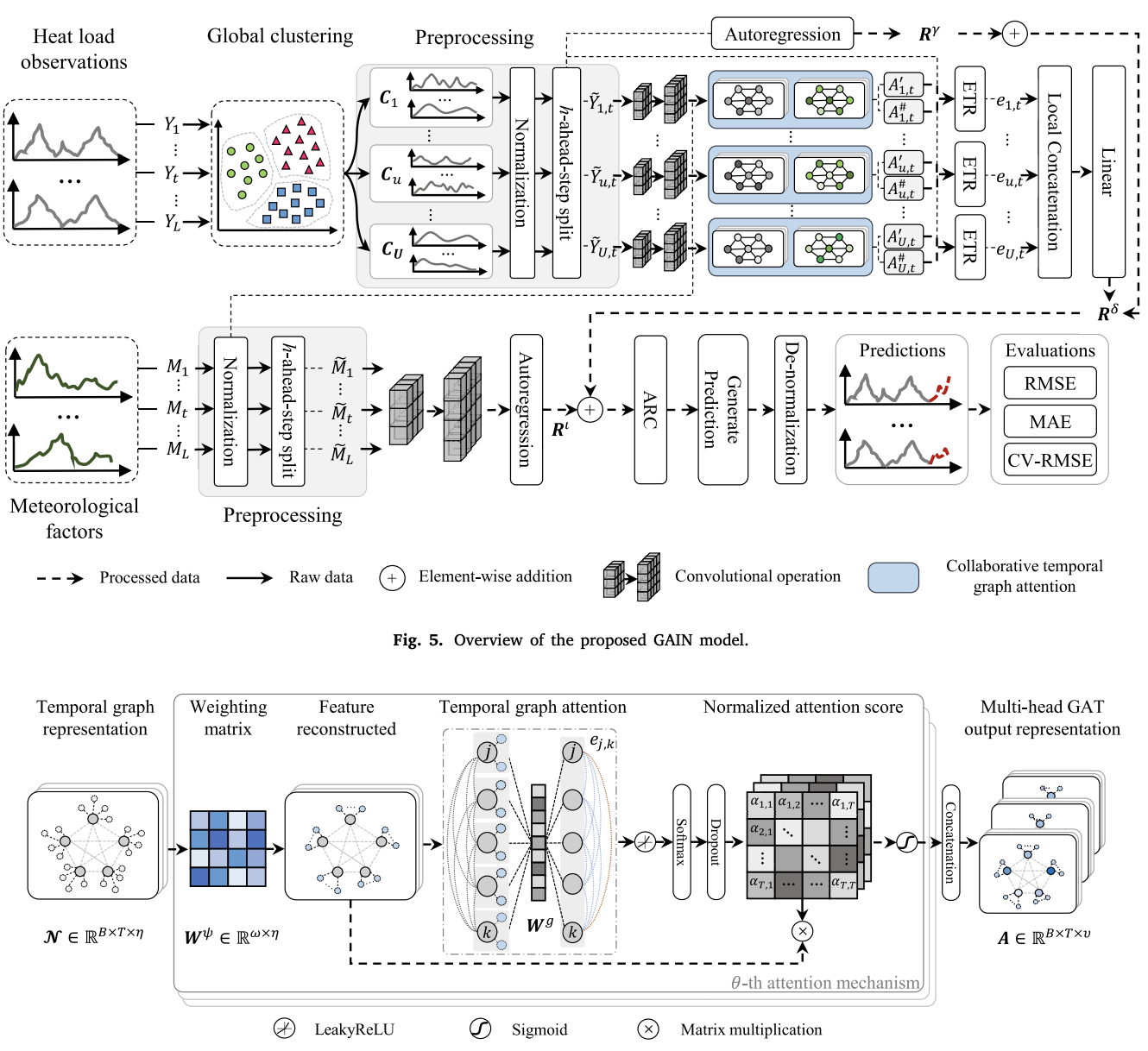 A Multivariate Time Series Graph Neural Network for District Heat Load ForecastingZhijin Wang, Xiufeng Liu, Yaohui Huang, and 2 more authorsEnergy, 2023
A Multivariate Time Series Graph Neural Network for District Heat Load ForecastingZhijin Wang, Xiufeng Liu, Yaohui Huang, and 2 more authorsEnergy, 2023Heat load prediction is essential for energy efficiency and carbon reduction in district heating systems. However, heat load is influenced by many factors, such as building characteristics, consumption behavior, and climate, making its prediction challenging. Traditional methods based on physical models are complex and insufficiently accurate, whereas most data-driven statistical methods ignore customer energy consumption behaviors and their correlation, and do not account for the temporal inertia of consumption. This paper proposes a graph ambient intelligence (GAIN) method for heat load prediction, which classifies customers based on their load profiles and uses collaborative attention on temporal graphs to capture their associations and the weather impact on heat loads. GAIN also incorporates recursive and autoregressive methods to model the temporal inertia of consumption. The proposed method is evaluated on four metrics and compared with fifteen baseline methods. The results show that GAIN achieves the lowest daily forecasting errors in terms of RMSE, MAE, and CV-RMSE, with values of 6.972, 4.442, and 0.191, respectively. Besides, the proposed method achieves a maximum reduction of 25%, 29%, and 25% in RMSE, MAE, and CV-RMSE, respectively, compared to other methods when taking meteorological factors into account.
@article{journal/energy2023/278Wang, author = {Wang, Zhijin and Liu, Xiufeng and Huang, Yaohui and Zhang, Peisong and Fu, Yonggang}, title = {A Multivariate Time Series Graph Neural Network for District Heat Load Forecasting}, journal = {Energy}, volume = {278}, pages = {127911}, year = {2023}, doi = {https://doi.org/10.1016/j.energy.2023.127911}, url = {https://www.sciencedirect.com/science/article/pii/S0360544223013051}, dimensions = {true} } -
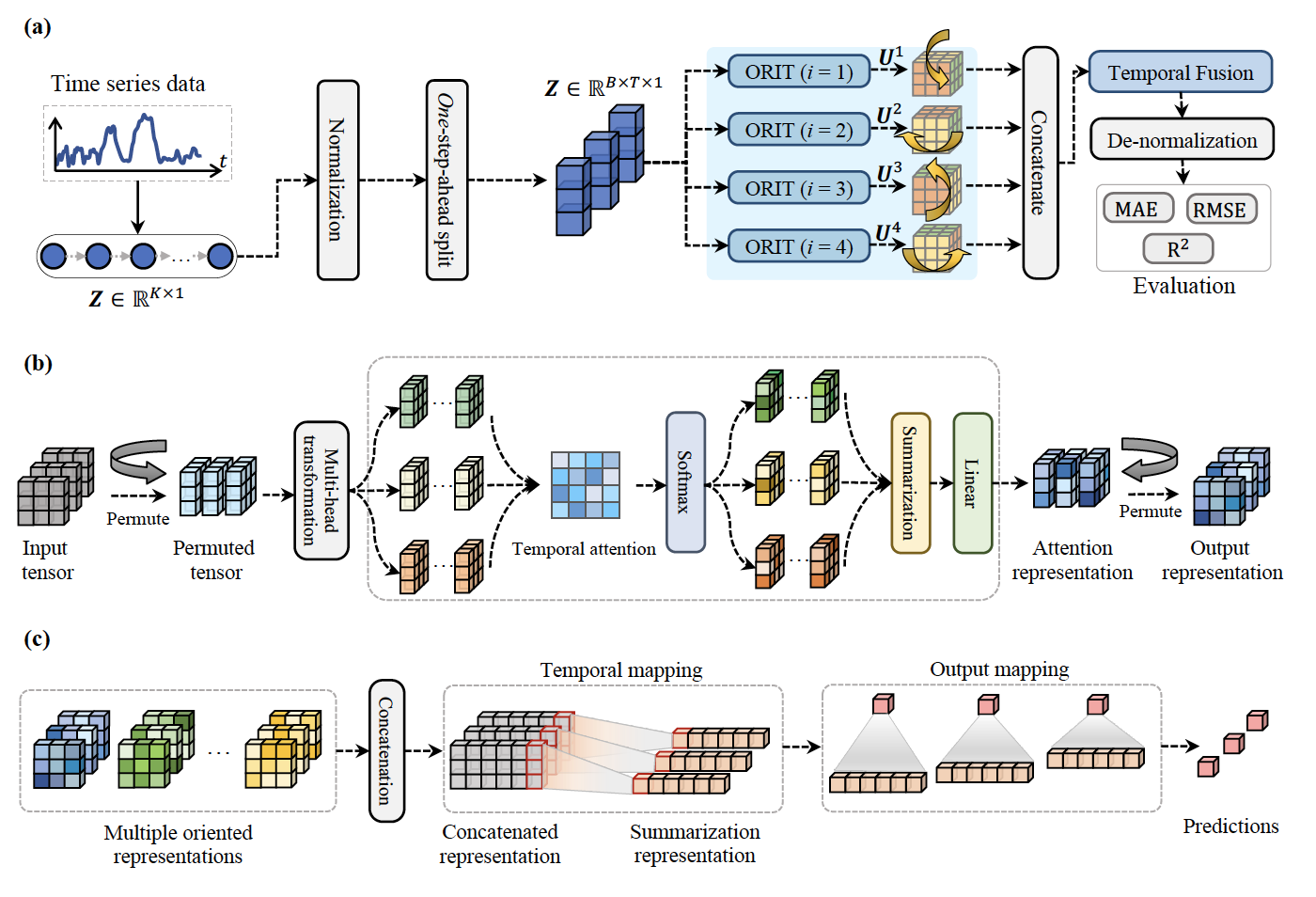 Oriented Transformer for Infectious Disease Case PredictionZhijin Wang, Peisong Zhang, Guoqing Chao, and 2 more authorsApplied Intelligence, 2023
Oriented Transformer for Infectious Disease Case PredictionZhijin Wang, Peisong Zhang, Guoqing Chao, and 2 more authorsApplied Intelligence, 2023Accurate prediction of infectious disease cases plays a crucial role in achieving effective infection prevention and control. However, the inherent variability of incubation periods and progression dynamics of infectious diseases pose significant challenges to the accuracy of predicting multiple diseases. Multiple representation fusion (MRF) methods would improve the performance of prediction models, due to their capability to capture diverse temporal dependencies that reflect potential disease transmission patterns. But the traditional fusion approach for infectious disease prediction still faces many challenges, including the requirement of auxiliary data, vulnerability to disease evolution, and lack of intuitive explanation. To address these challenges, this paper proposes an oriented transformer (ORIT) for infectious diseases cases prediction. Contrary to traditional MRF structures that integrate representations from multiple data sources, the MRF in the proposed ORIT combines multi-orientation context vectors solely by capturing multi-dimensional temporal relationships within disease case data. Furthermore, this paper considers the heterogeneity of the incubation period in the prediction of different infectious disease cases. Lastly, this paper conducts comprehensive experiments to evaluate the proposed method using two real datasets of infectious diseases, and compares it with well-known prediction methods. The experimental results verify the effectiveness of the proposed method.
@article{journal/apin2023/Wang, author = {Wang, Zhijin and Zhang, Peisong and Chao, Guoqing and Xie, Xijiong and Fu, Yonggang}, title = {Oriented Transformer for Infectious Disease Case Prediction}, journal = {Applied Intelligence}, volume = {}, number = {}, pages = {}, year = {2023}, url = {}, doi = {}, dimensions = {true}, }
2022
-
 Dual-grained directional representation for infectious disease case predictionPeisong Zhang, Zhijin Wang, Yaohui Huang, and 1 more authorKnowledge-Based Systems, 2022
Dual-grained directional representation for infectious disease case predictionPeisong Zhang, Zhijin Wang, Yaohui Huang, and 1 more authorKnowledge-Based Systems, 2022The uncertain infection transmission causes challenges in accurate disease prediction. Numerous methods have been proposed to capture the temporal pictures from past observations within equal time intervals, which are called single-grained time series. However, these methods are not suitable for capturing uncertain temporal dynamics from infectious disease time series, since the infectious diseases may propagate in the incubation period. To address this issue, this paper proposes a Dual-Grained Directional Representation (DGDR) to generate predictions, via consolidating the representations of an equal-grained time series and several fine-grained time series. Firstly, the proposed DGDR learns a transformed segmentation into three kinds of representations. And then those representations from both equal-grained data and fine-grained data are temporally consolidated to connect with outputs. Extensive experiments on two real infectious disease datasets are done to validate the proposed DGDR. Compared with the other twelve methods, MAE value is decreased by 31.5%, RMSE value is decreased by 29.9%, and R2 value is improved by 87.6%.
@article{journal/knosys2022/Zhang, title = {Dual-grained directional representation for infectious disease case prediction}, journal = {Knowledge-Based Systems}, volume = {256}, pages = {109806}, year = {2022}, issn = {0950-7051}, publisher = {Elsevier}, doi = {https://doi.org/10.1016/j.knosys.2022.109806}, url = {https://www.sciencedirect.com/science/article/pii/S0950705122009194}, author = {Zhang, Peisong and Wang, Zhijin and Huang, Yaohui and Wang, Mingzhai}, dimensions = {true}, } -
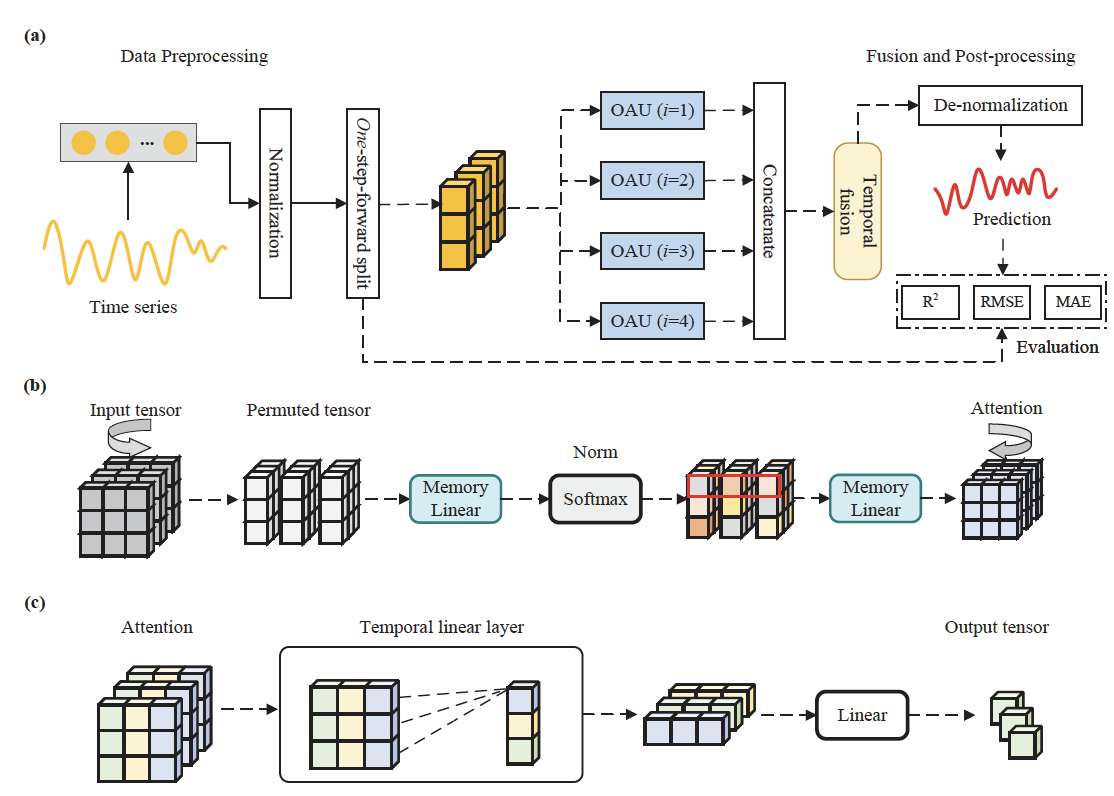 An Oriented Attention Model for Infectious Disease Cases PredictionPeisong Zhang, Zhijin Wang, Guoqing Chao, and 2 more authorsIn Advances and Trends in Artificial Intelligence. Theory and Practices in Artificial Intelligence, Jul 2022
An Oriented Attention Model for Infectious Disease Cases PredictionPeisong Zhang, Zhijin Wang, Guoqing Chao, and 2 more authorsIn Advances and Trends in Artificial Intelligence. Theory and Practices in Artificial Intelligence, Jul 2022Effective infectious disease prediction supports the success of infection prevention and control. Several attention-based predictive models can be applied to undertake the prediction task. However, using a single attention mechanism can only capture local information, i.e. part of the temporal dynamics from time series. In this paper, we take for the hypothesis that using multiple attention from different aspects could improve prediction accuracy. An oriented attention model (OAM) is proposed to draw temporal dynamics in several aspects, via oriented attention units and their aggregation. Firstly, time series are represented as oriented transformations. And then those representations are consolidated to connect with outputs. Intensive experiments on two real infectious disease datasets show OAM’s effectiveness.
@inproceedings{conference/ieaaie2022/Zhang, author = {Zhang, Peisong and Wang, Zhijin and Chao, Guoqing and Huang, Yaohui and Yan, Jingwen}, title = {An Oriented Attention Model for Infectious Disease Cases Prediction}, booktitle = {Advances and Trends in Artificial Intelligence. Theory and Practices in Artificial Intelligence}, year = {2022}, month = jul, publisher = {Springer International Publishing}, address = {Cham, Japan}, pages = {124--136}, dimensions = {true}, } -
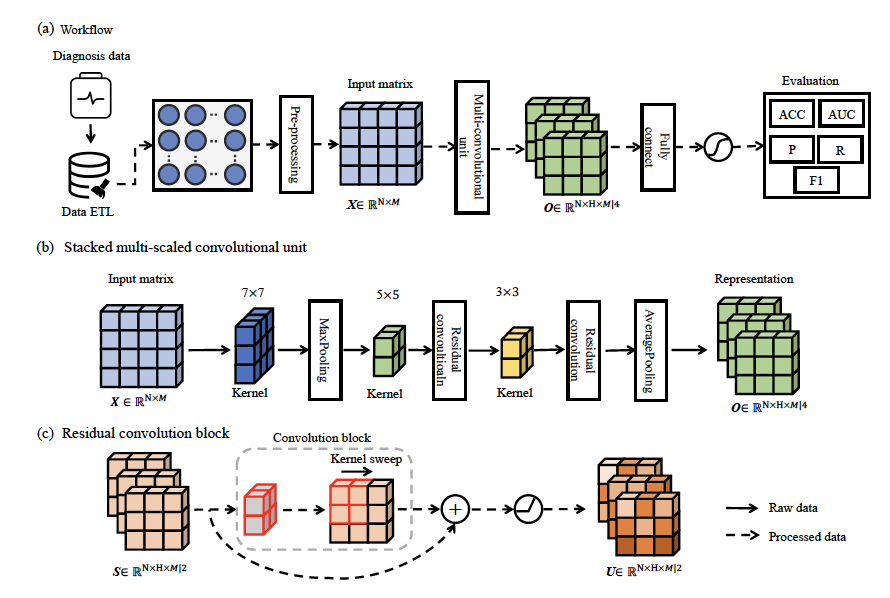 Learning High-dimensional Associations for Nonalcoholic Fatty Liver Disease Diagnosis PredictionZhijin Wang, Bing Cai, Wen Yang, and 3 more authorsIn 2022 IEEE Smartworld, Ubiquitous Intelligence & Computing, Scalable Computing & Communications, Digital Twin, Privacy Computing, Metaverse, Autonomous & Trusted Vehicles (SmartWorld/UIC/ScalCom/DigitalTwin/PriComp/Meta), Jul 2022
Learning High-dimensional Associations for Nonalcoholic Fatty Liver Disease Diagnosis PredictionZhijin Wang, Bing Cai, Wen Yang, and 3 more authorsIn 2022 IEEE Smartworld, Ubiquitous Intelligence & Computing, Scalable Computing & Communications, Digital Twin, Privacy Computing, Metaverse, Autonomous & Trusted Vehicles (SmartWorld/UIC/ScalCom/DigitalTwin/PriComp/Meta), Jul 2022@inproceedings{conference/uic2022/194Wang, author = {Wang, Zhijin and Cai, Bing and Yang, Wen and Zhang, Peisong and Huang, Yaohui and Tang, Jinmo}, booktitle = {2022 IEEE Smartworld, Ubiquitous Intelligence & Computing, Scalable Computing & Communications, Digital Twin, Privacy Computing, Metaverse, Autonomous & Trusted Vehicles (SmartWorld/UIC/ScalCom/DigitalTwin/PriComp/Meta)}, title = {Learning High-dimensional Associations for Nonalcoholic Fatty Liver Disease Diagnosis Prediction}, year = {2022}, volume = {}, number = {}, pages = {194-201}, doi = {10.1109/SmartWorld-UIC-ATC-ScalCom-DigitalTwin-PriComp-Metaverse56740.2022.00052}, dimensions = {true} }
2021
- Prediction of HFMD cases by leveraging time series decomposition and local fusionZiyang Wang, Zhijin Wang, Yingxian Lin, and 4 more authorsWireless Communications and Mobile Computing, Jul 2021
@article{journal/wcmc2021/2021Wang, title = {Prediction of HFMD cases by leveraging time series decomposition and local fusion}, author = {Wang, Ziyang and Wang, Zhijin and Lin, Yingxian and Liu, Jinming and Fu, Yonggang and Zhang, Peisong and Cai, Bing}, journal = {Wireless Communications and Mobile Computing}, volume = {2021}, pages = {1--10}, year = {2021}, doi = {10.1155/2021/5514743}, dimensions = {true} }